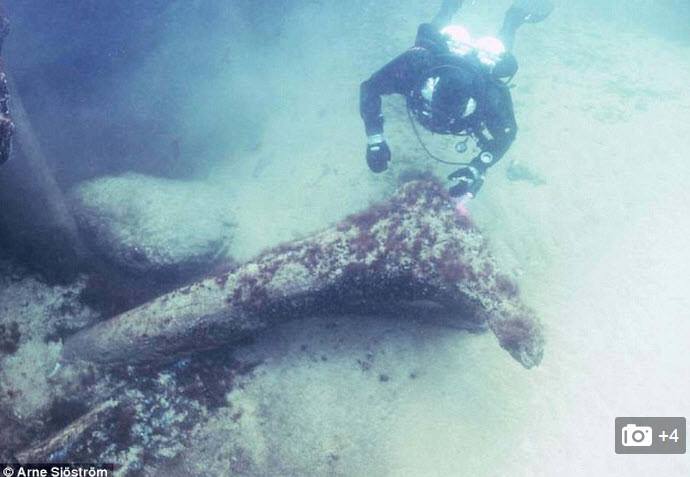 |
| Atlantide Svedese |
Il secondo Cataclisma probabilmente di origine vulcanica, sarebbe avvenuto circa 200000 anni fa, e per causa sua l’Atlantide restò ridotta e diminuita.
Il terzo cataclisma, causato all’azione vulcanica, avvenne 80.000anni fa e dette alla terra un aspetto del tutto differente, riducendo l’Atlantide a due isole Routo e Daitya. Infine il quarto cataclisma ebbe luogo nell’anno 9564 a.C. quando Atlantide non esisteva che allo stato d’isola: l’isola di Poseidone. Essa fu inghiottita e disparve così dalla terra.
In questo ritrovamento si riferisce la presenza di strumenti, bovini, corde e altri manufatti . Uno dei quali era un arpione creato dall’estinto Auroch , che e’ un antenato del tipo di grandi bovini selvatici che abitavano l’Europa, l’Asia e il nord Africa , sono sopravvissuti in Europa fino agli ultimi uri registrati morti nellaforesta, . dei quali l’ultimo esemplare deceduto nel 1627 in Polonia.
Quante di queste civita” antiche esistevano ? quante ne verranno alla luce? Atlantide rimarra’ il solo mito o scopriremo verita’ fino ad ora ignote?
Fonte - http://gabrielelombardo.altervista.org/, 28 gennaio 2014
ENGLISH VERSION
Not Atlantis, but significant nonetheless – Swedish divers find 11,000-year-old relics
Swedish divers have made a unique and rare discovery in the Baltic Sea – Stone Age artefacts left by Swedish nomads dating back 11,000 years. Media sites are going a little berserk with talks of a ‘Swedish Atlantis’ and the ‘oldest settlement in Sweden’. However, a few facts need to be put straight. Firstly, this discovery is not even close to descriptions of Atlantis. Secondly, it does not reflect a city, town, or village. But we can still get excited about this discovery, because these are incredibly old artefacts which may shed light on how hunter-gatherers in the region once lived.
Björn Nilsson, archaeology professor at Södertörn University, and his team, have been given resources by the Swedish National Heritage Board to conduct a three-year excavation below the water’s surface in Hanö, a sandy bay off the coast of Skåne County. While excavations are still underway, so far, they have uncovered a number of remnants that are believed to have been discarded in the water by Swedes in the Stone Age, objects which have been preserved thanks to the lack of oxygen and the abundance of gyttja sediment, which is sediment rich in organic matter at the bottom of a eutrophic lake. It is extremely rare to find evidence from the Stone Age so unspoiled.
Buried 16 metres below the surface, Nilsson uncovered wood, flint tools, animal horns and ropes. Among the most notable items found include a harpoon carving made from an animal bone, and the bones of an ancient animal called aurochs, the ancestor of domestic cattle, the last of which died off in the early 1600s. “There’s wood and antlers and other implements that were thrown in there,” said Nilsson. “Around 11,000 years ago there was a build up in the area, a lagoon or sorts … and all the tree and bone pieces are preserved in it. If the settlement was on dry land we would only have the stone-based things, nothing organic.” However, unlike the stories of Atlantis, the remains do not come from a great city or even a village because the people were nomadic at the time. Archaeologists are continuing the dig, and are now particularly interested to see whether there is also an ancient burial site in the region. Featured image: A diver examines an 11,00-year-old tree trunk.
Photo credit: Arne Sjöström
By April Holloway -
See more at: http://www.ancient-origins.net
via: enricobaccarini.com















Nessun commento:
Posta un commento